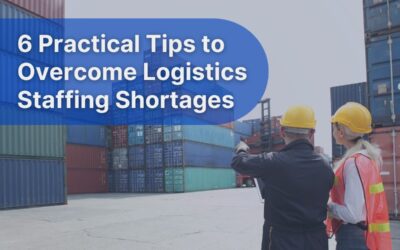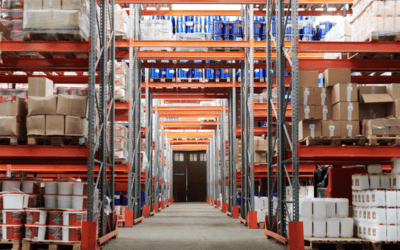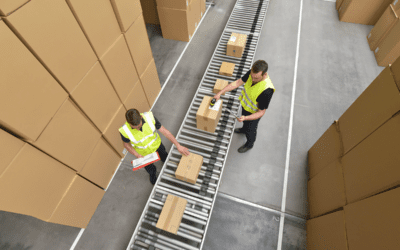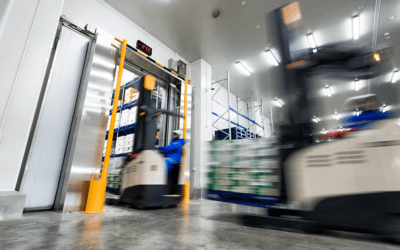These days, logistics service providers possess one of the biggest data banks. With every order and trip in your process, your database gains a load of valuable information. For example, you know the exact time of which goods are stored in your warehouse, what activities were executed, and how long it takes for these goods to go from A to B. With this, you automatically possess the data to smartly deal with customer demands, provide new services, and improve your internal processes. In other words, make money with data. At the moment, one of the most important trends in the logistics industry.
A large amount of data offers possibilities, but also brings challenges. So, where do you start? What do you need to think of? How can you use your data to work more efficiently, more targeted, and more profitable? Of course, there is more to this than meets the eye. Therefore, we have listed five ways in which you can use your data to your advantage. And as a bonus: 5 steps to profit from your data.
First things first: what request for information is there?
Most companies are continuously searching for ways to optimize their processes, to work more efficiently. Think of: how can you increase the revenue with your existing clientele? Some of the most important questions you then have to ask yourself are: what do we excel in? And what slows our process down? What factors do our customers find most important? And, what activities can we add to our services?
You may want to step into new markets. In that case, what opportunities are there? How can you signal new opportunities first, to stay ahead of the competition? A small grasp of possible questions and opportunities.
When the Covid crisis is under control, and the economy starts to grow again, focusing on data as a revenue model will result in a distinctive character and higher returns for these companies. As a result of Covid, this trend will therefore continue stronger.
– Machiel Bode, Sector Banker Transport & Logistics, ING
5 steps to benefit from your data
Many roads are leading to Rome: the quickest, the shortest, the most spectacular one. For the most efficient route, we have listed five steps that help you bring yourself to your destination.
- Step 1: First, think about what you want to use the data for. For example:
- To better handle customer wishes
- To improve your services
- To optimize your business processes
- To signal market opportunities and developments
- Step 2: Determine what information you need
- Step 3: Map out different data sources, both internal and external.
- Step 4: Maintain, order, and analyze
- Step 5: Evaluate and adjust if necessary.
5 ways to use your data in your business model
Though a list like this is never comprehensive, underneath, we will share five examples as an inspiration of how to effectively use your data.
1. Know exactly what KPIs match your organization
Data can offer you insights into your strengths and weaknesses. Therefore, map out the factors of success, and discover how you can utilize them even more. Read more about the most important KPIs for logistics service providers here.
2. Optimize loads: leave no pallet place or loading space unused
Does your customer call with a last-minute request to deliver ten pallets in two hours? Then, it pays off to know exactly where the goods are stored and where an extra order can be placed.
3. Prevent unnecessary kilometers on the road and in your warehouse.
Prevent you are transport air in your trucks, or that your stands catch dust. Determine based on data how much space is available, and what is the best layout for your warehouse (or trucks). In this way, you minimize unnecessary movements and unnecessary loss of space.
4. Plan your staff based on (predicting) data
Colleagues who are twisting their thumps, because of the lack of work. Or a shortage in employees. In both situations, you would want to prevent as much as possible. Luckily, Big Data can give you insights into the expected workload and offer you tools to plan your employees as efficiently as possible. In this way, you prevent delays in order delivery due to a shortage in the workforce, as well as unnecessary high personnel costs.
5. Servization: offer extra services
As a logistics service provider, you are willing to take an extra step for your customers. However, that must not cost you extra money, and chances are that customers do not even notice the extra service. Therefore, analyze what actions you do for your customers, how much time they cost, and most importantly what the results are. Are the conclusions that you offer extra services too much, without any financial gains? Review whether or not you can offer the activities as a paid service together with other extra services.
Data in 3PL Dynamics
Dealing with data correctly can have big consequences for your organization, and the services you offer to your customers. However, you must put yourself in a position where you can work with this data. That starts with a matching software solution. Because only by using the right tools, you can really profit from your data. For example, this gives you the opportunity to simply analyze (real-time) data, and act on it. Do you want to know more about how your software can help you? Contact us here!







